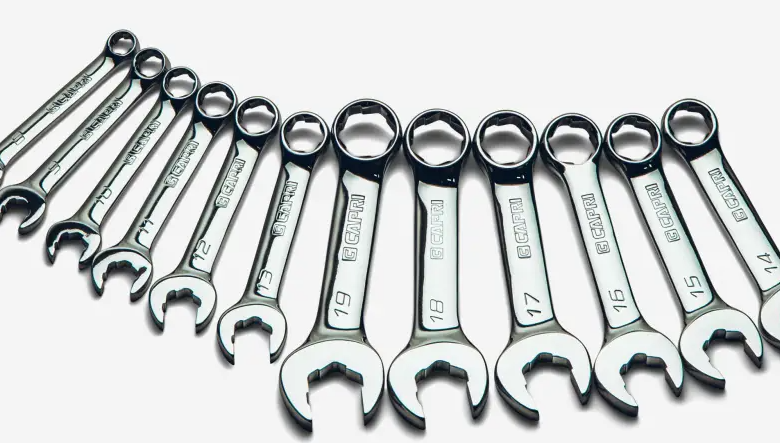Mastering the Art of Bending Wrenches

Bending wrenches are a type of wrench that allows you to work in tight spaces where a straight wrench cannot reach you. They are essential tools for mechanics, plumbers, electricians, and anyone who needs to work on machines or equipment. However, bending wrenches can be challenging to use, and it takes practice to master the art of bending wrenches. In this blog, we will discuss the different types of bending wrenches, the techniques for using them, and tips for mastering the art of bending wrenches.
Types of Bending Wrenches
There are several types of bending wrenches, each designed for a specific purpose. The most common types of bending wrenches are:
Offset Wrenches:
Offset wrenches are the most common type of bending wrenches. They have an angled head that allows you to work in tight spaces, such as between pipes or around corners. Offset wrenches come in a variety of sizes and are available in both metric and imperial sizes.
Crowfoot Wrenches:
Crowfoot wrenches are similar to offset wrenches, but they have a socket-like head that fits over a nut or bolt. They are used with an extension bar and a ratchet to turn the nut or bolt. Crowfoot wrenches are often used in automotive work, where space is limited.
Flare Nut Wrenches:
Flare nut wrenches are used to tighten or loosen nuts on brake lines or hydraulic lines. They have a specialized design that allows them to grip the nut without damaging the flare on the end of the line.
Box Wrenches:
Box wrenches are another type of bending wrench that is commonly used in automotive work. They have a closed-end design that provides better grip and torque than an open-end wrench.
Techniques for Using Bending Wrenches
Using bending wrenches requires a different technique than using a straight wrench. Here are some tips for using bending wrenches effectively:
Use the Right Size Wrench:
Using the right size wrench is essential when using bending wrenches. If the wrench is too small, it will not provide enough leverage to turn the nut or bolt. If the wrench is too large, it may not fit in the space.
Position the Wrench Correctly:
When using a bending wrench, it is important to position the wrench correctly on the nut or bolt. The wrench should be flush against the nut or bolt to prevent it from slipping.
Apply Pressure in the Right Direction:
When using a bending wrench, apply pressure in the direction that will loosen or tighten the nut or bolt. Applying pressure in the wrong direction can damage the nut or bolt or cause it to break.
Use a Breaker Bar:
If the nut or bolt is difficult to turn, use a breaker bar to provide extra leverage. A breaker bar is a long-handled wrench that provides extra torque, making it easier to turn the nut or bolt.
Tips for Mastering the Art of Bending Wrenches:
Bending wrenches require practice and patience to master. Here are some tips to help you become an expert in using bending wrenches:
Start with the Basics:
Begin by practicing with the most basic bending wrenches, such as offset wrenches or box wrenches. These wrenches are the easiest to use and provide a good foundation for more complex bending wrenches.
Use a Vice:
A vice can be a helpful tool when practicing with bending wrenches. It allows you to secure the nut or bolt, making it easier to apply pressure to the wrench.
Practice in Different Positions:
When practicing with bending wrenches, try working in different positions, such as upside down or sideways. This will help you get comfortable using the wrench in any position.
Video Tutorials:
There are many video tutorials available online that can help you learn how to use bending wrenches correctly. These videos can be especially helpful for visual learners who may struggle to understand written instructions.
Choose the Right Size Wrench
Using the correct size wrench is crucial for getting the job done correctly. Make sure you have a wrench that fits the nut or bolts snugly without any wiggle room. Using a wrench that is too small can damage the fastener, while using a wrench that is too large can strip the fastener.
Apply Pressure Gradually
When applying pressure to the wrench, it’s important to start slowly and gradually increase the force. Applying too much force too quickly can cause the wrench to slip or strip the fastener. Apply pressure in small increments until you feel resistance, then stop and adjust your grip if necessary.
Use Proper Technique
Proper technique is important when using bending wrenches. Make sure you are using the right type of wrench for the job, and grip the wrench firmly with your dominant hand. Use your other hand to support the wrench and provide additional leverage if necessary. Always pull the wrench towards your body instead of pushing it away, as this provides more control and reduces the risk of slipping.
Practice, Practice, Practice
Becoming proficient in using bending wrenches takes time and practice. Don’t be discouraged if you struggle at first – keep practicing and you’ll improve over time. Look for opportunities to use bending wrenches whenever possible, and try to challenge yourself by working in tight spaces or with difficult-to-reach fasteners.
Conclusion
In conclusion, mastering the art of bending wrenches takes practice, patience, and attention to detail. By following these tips and investing time in practicing, you can become an expert in using bending wrenches and tackle even the toughest jobs with confidence.



